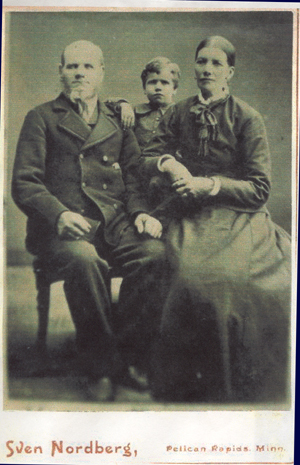Sign up for the Family Tree Newsletter Plus, you’ll receive our 10 Essential Genealogy Research Forms PDF as a special thank you!
Get Your Free Genealogy Forms
"*" indicates required fields
 Jonathan Nelson sent me this question: “Did photo studios in the United States have the insight and technical ability (around 1900) to make copies of old photos brought to America by immigrants from the old country?”
Jonathan Nelson sent me this question: “Did photo studios in the United States have the insight and technical ability (around 1900) to make copies of old photos brought to America by immigrants from the old country?”
The answer is yes! Judging from the number of duplicate images I’ve seen, copying older pictures was a mainstay of a photographer’s business—even in the daguerreotype era. Since ambrotypes and daguerreotypes don’t have negatives, a client who wanted a duplicate either had to sit for a second image or have original copied. Photographers took tintypes with multiple-lens cameras, making several images in the same sitting. Later, paper prints with negatives for made obtaining copies a cinch—all the photographer had to do was print copies from the negative. If it no longer existed, he could photograph the original to make a copy.
Nelson and his cousin want to figure out why they have identical ancestral photographs taken by different studios-one in Morehead and the other in Pelican Rapids, Minn. They’ve done their genealogical research. Two family members identified the people in the portrait, and the cousins even confirmed the information based on the age of the child. Here’s the challenge: The identifications and possible date for the picture, combined with the family’s year of immigration, strongly suggest the original image was taken in Sweden. If they’re right, these copies were made about 1885, after the immigration. Let’s break down the clues and see if they add up.
Who’s in the Picture?
According to Nelson, “My maternal grandmother and her first cousin (both deceased) have identified the people in the photo as their grandparents, Johan Markus Johansson, with youngest son August.” August was born in 1880 in Sweden, and is about 5 years old in this picture. His mother died in 1899 in Sweden. About a year later Johan Markus and his son immigrated to the United States.
When was the picture taken?
Nelson’s image shows Sven Nordberg of Pelican Rapids, Minn., as the photographer. The Minnesota Historical Society has a database of Minnesota photographers, but Nordberg wasn’t in it. I found him in 1900 in Ancestry.com census database as a saloon keeper. The record didn’t give a year of immigration but confirmed he was born in Sweden. He’d been married for 5 years to a native Minnesota woman. That suggests our photographer lived in the area from at least 1895 to his death in 1910. His primary occupation was at the saloon, but he could have operated a small photo studio for extra income.
Based on the woman’s hair and clothing, I agree with Nelson’s 1885 date for the photo. Her dress has several mid-1880s characteristics:
- Her hair is pulled back into a low bun.
- The bodice of her dress extends past her waist.
- Her dress features a small stand up collar with a bow at the neckline.
Clothing Clues
The outfit lacks large buttons on the front of the bodice or an overskirt like the majority of mid-1880s dresses, the absence of those details don’t bother me. The rest of her dress is consistent with the time period.
Fashion details confirm this picture was taken in the 1880s and that Nordberg made the copy about 1900. Nelson and his cousin ended up with the same portrait because two different studios re-photographed the original picture.
I have one outstanding question. Johan Markus (born in 1833) and his wife (born in 1840) would have been 52 and 45, respectively, in this portrait. To confirm their identity, I’d try to find August’s birth certificate to verify his parents’ ages at his birth. If that fits, Jonathan Nelson’s family mystery is solved.
ADVERTISEMENT

